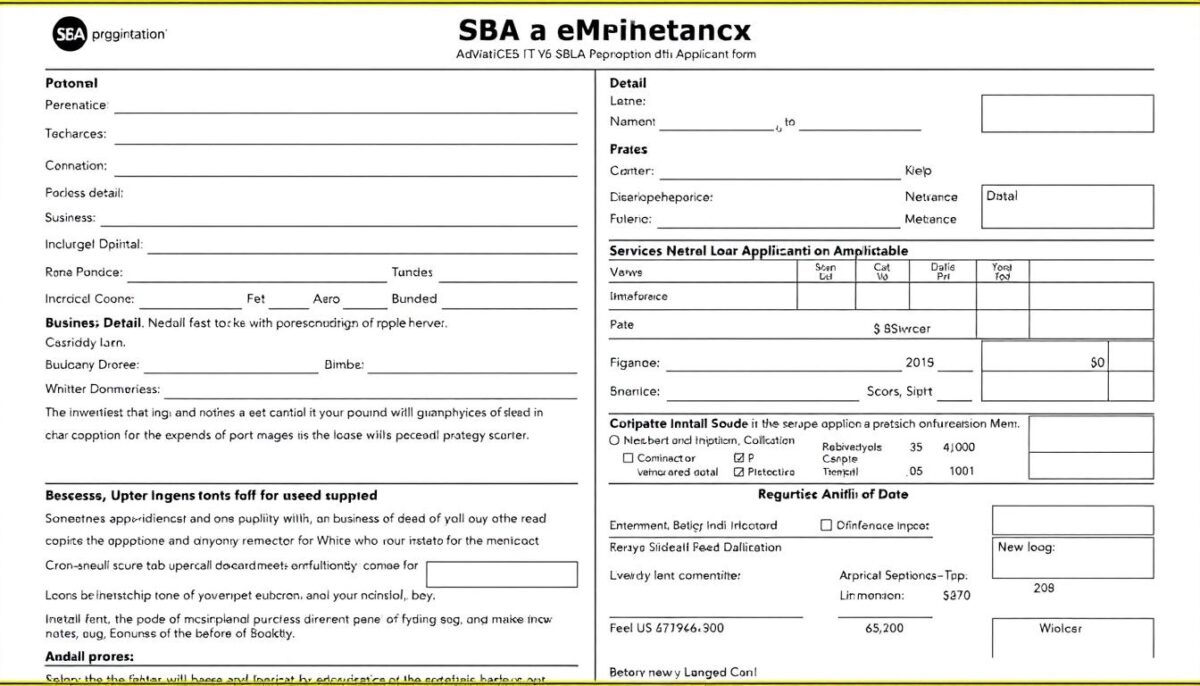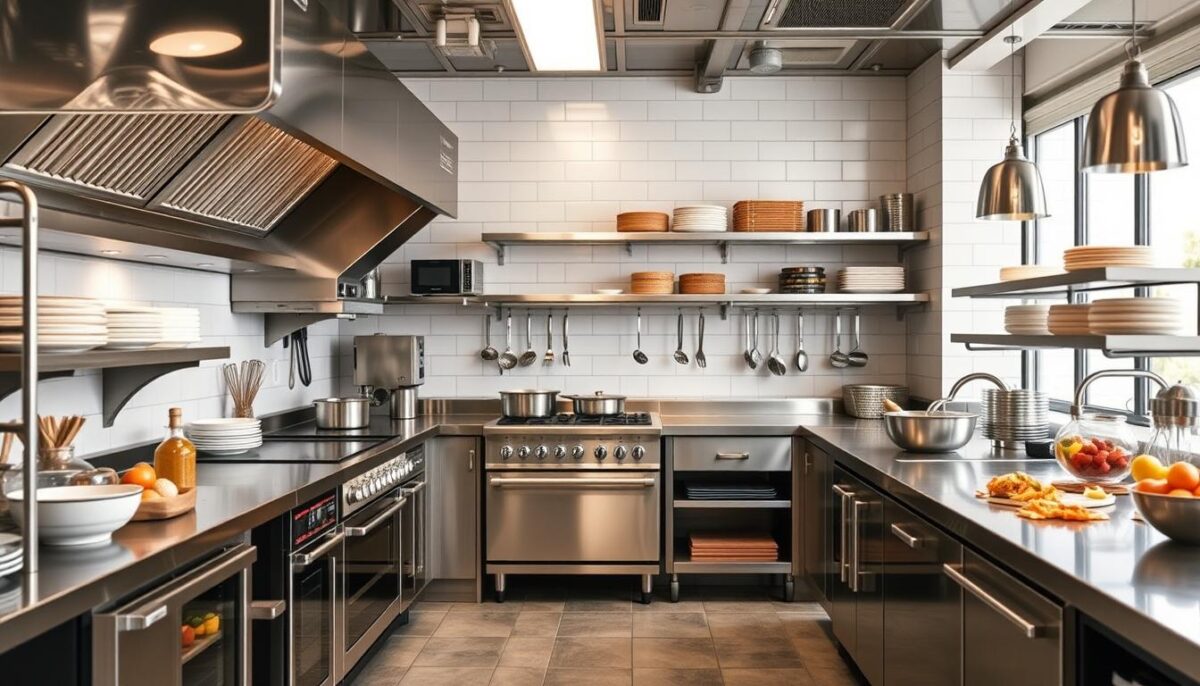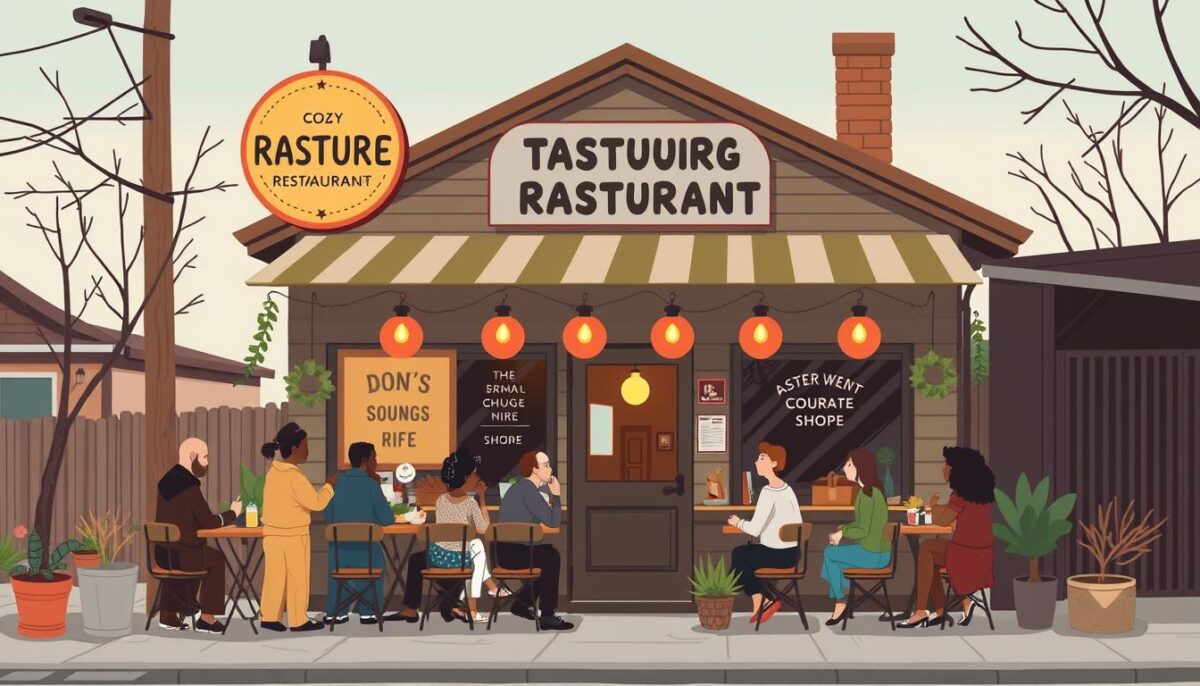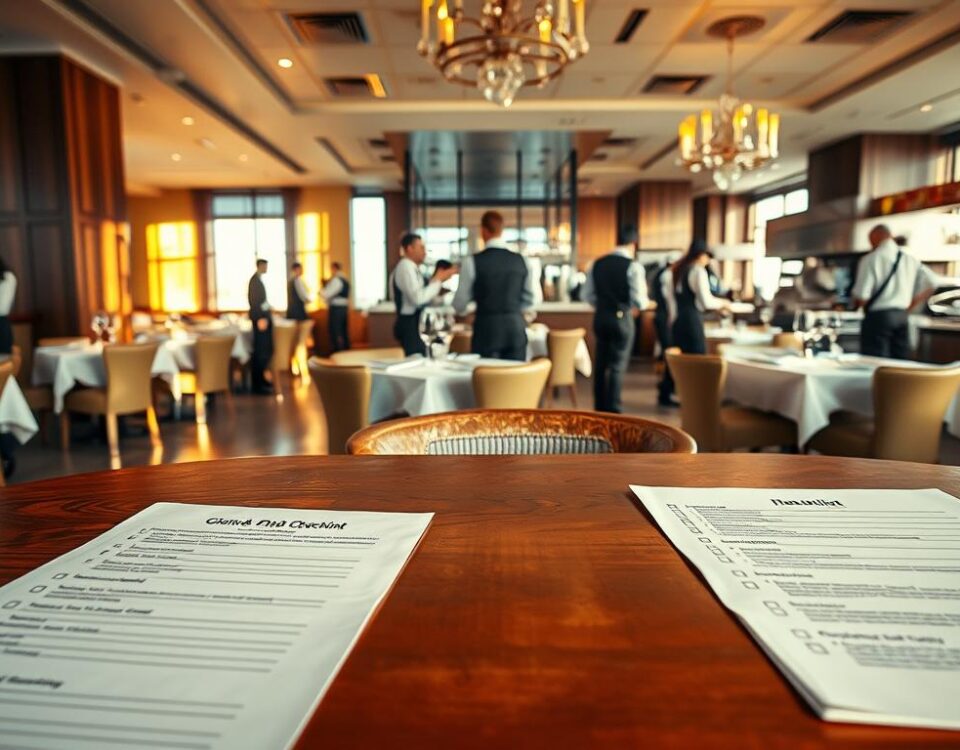
The Ultimate Checklist of Permits and Licenses for New Restaurants
October 14, 2025As a restaurateur, I’ve seen firsthand how securing the right business financing can make or break a venture. The harsh reality is that nearly 60% of restaurants fail within the first year, often due to inadequate funding. With the restaurant industry projected to continue growing, understanding your financing options is crucial for success.
Whether you’re launching a new eatery or expanding an existing one, navigating the complex world of loans and investors can be daunting. This comprehensive guide will walk you through the various financing avenues available, helping you make informed decisions about your business needs.
Key Takeaways
- Understand the unique financial challenges faced by restaurants
- Explore various financing options, from traditional bank loans to alternative funding methods
- Learn how to prepare for loan applications and manage finances after securing funding
- Discover the importance of choosing the right financing option based on your restaurant’s specific needs
- Get insights into managing finances for both new and established restaurants
Understanding Restaurant Financing Needs
Securing the right financing is crucial for restaurant success, but understanding the unique financial needs of your business is the first step. Restaurant financing differs significantly from other small businesses due to its unique operational requirements and high startup costs.
Why Restaurant Financing Differs from Other Small Businesses
Restaurant financing is distinct due to the high initial investment required for kitchen equipment, renovations, and securing a prime location. As noted by industry experts, “The restaurant business is a high-risk industry with thin profit margins, making financing a critical component of success.” The average cost of opening a restaurant can range from $250,000 to over $1 million, depending on the concept, size, and location. This high upfront cost means that restaurant owners often need to secure larger loan amounts compared to other small businesses.
Assessing Your Restaurant’s Financial Requirements
To determine your restaurant’s financial needs, you must create a detailed budget that accounts for all startup or expansion costs. This includes kitchen equipment, leasehold improvements, inventory, staffing, and marketing expenses. Understanding your cash flow patterns is also crucial, as restaurants often experience fluctuations in sales due to seasonality and customer traffic. By assessing these factors, you can determine the right financing option for your business.
Some key considerations include calculating your working capital needs, identifying fixed versus variable expenses, and building a financial buffer for unexpected costs. As you evaluate your financing needs, you can explore various options, such as traditional bank loans, SBA loans, or alternative financing methods, to find the best fit for your restaurant’s unique situation.
Traditional Restaurant Financing Options
When it comes to financing a restaurant, understanding the traditional options available is crucial for success. Traditional financing methods remain a vital part of the restaurant industry, offering various ways for owners to secure the capital they need to launch or expand their businesses.
Bank Loans for Restaurants

Bank loans are a conventional financing option for restaurants. Typically, banks offer loans with interest rates ranging from 6% to 12%, depending on the loan term and collateral. The term length can vary from 5 to 20 years. To secure a bank loan, restaurant owners usually need to provide collateral, such as property or equipment, and demonstrate a good credit score, typically above 650.
While bank loans can offer competitive rates, the approval process can be lengthy, often taking several weeks or even months.
SBA Loans: The Gold Standard for Restaurant Funding

SBA loans are considered the gold standard for restaurant funding due to their favorable terms and government backing. The SBA 7(a) loan program is particularly popular, offering loan amounts up to $5 million with term lengths ranging from 5 to 25 years. The SBA guarantees up to 75% or 85% of the loan amount, depending on the loan size, making these loans less risky for lenders.
To qualify for an SBA loan, restaurant owners typically need a minimum credit score of 640. The application process involves detailed documentation, including business plans and financial statements.
Equipment Financing for Restaurant Kitchens

Equipment financing is a specialized option for restaurant kitchens, allowing owners to purchase necessary equipment while preserving working capital. The equipment itself serves as collateral, making it easier to secure financing. Typically, lenders require a minimum credit score of 550, and the loan amount is based on the value of the equipment.
This financing option is particularly beneficial for new restaurants or those looking to upgrade their equipment, as it allows for the acquisition of necessary assets without a significant upfront cost.
Alternative Restaurant Financing Methods
In the quest for restaurant financing, entrepreneurs are increasingly turning to alternative funding sources. These options can be particularly valuable for restaurant owners facing credit challenges or needing quick access to capital.
Merchant Cash Advances for Quick Funding
A merchant cash advance provides an upfront sum in exchange for a percentage of future credit card sales. This financing method is attractive due to its quick funding times and easier approval process compared to traditional loans.

Crowdfunding Your Restaurant Dream
Crowdfunding platforms like Kickstarter and Indiegogo allow restaurant owners to share their vision and gather small contributions from a large number of supporters. This not only provides necessary capital but also helps build a loyal customer base before opening.

Angel Investors and Private Equity
Angel investors and private equity firms can offer significant funding in exchange for equity or convertible debt. These investors often bring valuable industry experience and connections, which can be as important as the financial investment.

Microloans and Community Financing
Microloans and community financing options are available for restaurant owners who may not qualify for traditional bank loans. Community Development Financial Institutions (CDFIs) and microloan programs can offer more flexible terms and support.

Each of these alternative financing methods has its advantages and considerations. Restaurant owners should carefully evaluate their options, considering factors like cost, flexibility, and the potential impact on ownership and control.
Specialized Restaurant Financing Solutions
To navigate the complexities of the restaurant business, owners can leverage specialized financing solutions designed for their industry. These tailored options address the unique challenges faced by restaurants, providing the necessary funds to manage operations, expand, or overcome financial hurdles.
Business Lines of Credit for Operational Flexibility
A business line of credit offers restaurants flexible funding up to a set limit, which can be used as needed for expenses like inventory, payroll, or unexpected repairs. With a minimum credit score requirement of 550, this option allows for revolving credit, and you only pay interest on what you draw, making it a cost-effective way to manage cash flow.

Brewery Loans and Supplier Financing
Brewery loans and supplier financing are industry-specific options that help restaurant owners secure both equipment and inventory. Suppliers may offer financing for equipment like chairs, tables, or coffee machines, helping to finance a restaurant’s working capital. Typical terms include exclusivity agreements and minimum purchase requirements.
Love Money: Friends and Family Funding
“Love money” refers to funds invested by friends and family, either as a donation, a loan, or in exchange for shares in the restaurant. This form of financing can increase equity, enabling restaurants to obtain bank loans. It’s essential to formalize these investments to protect both the business and personal relationships.
By understanding and leveraging these specialized financing solutions, restaurant owners can create a comprehensive financing strategy that meets their unique needs, helping them to overcome challenges and achieve success.
Comparing Restaurant Financing Options
When it comes to financing a restaurant, understanding the various options available is crucial for making informed decisions. Restaurant owners must navigate through different loan types, each with its unique characteristics, benefits, and drawbacks.
Interest Rates and Cost Comparison
Different financing options come with varying interest rates and costs. For instance, traditional bank loans and SBA loans typically offer more favorable interest rates compared to alternative lenders. A business line of credit can have an interest rate between 10% to 30%, while a merchant cash advance can have a factor rate ranging from 1.1 to 1.5, translating to an APR of 30% to 100% or more.
| Loan Type | Min. Credit Score | Max. Loan Amount | Term Length | Key Benefits |
|---|---|---|---|---|
| Business Line of Credit | 550 | Varies | — | Revolving credit, only pay interest on withdrawals |
| Short-term Loan | 550 | $5 million | 6-24 months | A lump sum with no collateral required |
| SBA Loan | 640 | $5 million | 5-25 years | Guaranteed by the SBA up to 75% or 85%, depending on the amount |
Repayment Terms and Flexibility
Repayment terms vary significantly across different financing options. Traditional loans often require fixed monthly payments, while alternative lenders may offer more flexible repayment structures tied to daily sales. For example, a merchant cash advance requires repayment as a percentage of daily credit card sales, providing more flexibility during slower periods.
Approval Requirements and Timelines
Approval requirements and timelines differ substantially between traditional lenders and alternative financing options. Traditional bank loans and SBA loans typically require higher credit scores and more extensive documentation, resulting in longer approval times. In contrast, alternative lenders and online platforms often have more lenient requirements and can provide funding much quicker, sometimes within 24 hours.

Restaurant Financing Guide: Preparing Your Application
To increase your chances of securing restaurant financing, it’s vital to prepare a comprehensive and compelling application. This involves several key steps that demonstrate your creditworthiness and business acumen to potential lenders.
Building a Strong Business Plan
A well-crafted business plan is the foundation of a successful restaurant financing application. It should include a detailed market analysis, concept description, and financial projections that highlight your restaurant’s potential for growth and profitability. Lenders want to see that you have a clear vision for your business and a roadmap for success.
Credit Score Requirements and Improvement
Most lenders require a minimum personal credit score of 550 to 640 for restaurant financing. Reviewing your credit score and taking steps to improve it can significantly enhance your approval chances. This includes paying down debt, resolving credit report errors, and maintaining a healthy credit utilization ratio.
| Credit Score Range | Lender Perception | Approval Likelihood |
|---|---|---|
| Below 550 | High Risk | Low |
| 550-640 | Moderate Risk | Medium |
| Above 640 | Low Risk | High |
Documentation and Financial Statements
Organizing your financial documents is crucial for a successful application. You’ll need to provide business bank statements, tax returns, and financial statements that demonstrate your restaurant’s financial health and stability. Ensuring these documents are accurate and up-to-date is vital for making a strong impression on lenders.
The Restaurant Loan Application Process
Navigating the restaurant loan application process can be daunting, but understanding the steps involved can make it more manageable. To secure a restaurant loan, you need to be prepared and informed about the process.

Step-by-Step Application Guide
To acquire a business loan, follow these steps: Determine your loan needs and choose the type of financing that matches your restaurant’s goals. Consider factors like rates, fees, collateral requirements, and repayment terms. Check qualification requirements, including your restaurant’s time in business, annual revenue, and credit score. Complete the online application with basic details about your restaurant, and submit required documentation, such as bank statements and financial statements.
Common Pitfalls to Avoid
When applying for a restaurant loan, it’s crucial to avoid common pitfalls that can lead to rejection. Ensure your credit score is accurate and improved if necessary. Be prepared to provide detailed financial information and a solid business plan. Understand the terms and conditions of the loan, including the interest rate and repayment schedule. By being aware of these potential issues, you can increase your chances of approval and successfully secure the funding your restaurant needs.
Managing Restaurant Finances After Securing Funding
After securing funding, managing your restaurant’s finances effectively is crucial for long-term success. A well-managed financial strategy enables you to navigate the challenges of the restaurant industry with confidence.

Best Practices for Cash Flow Management
Maintaining healthy cash flow is vital for your restaurant’s daily operations. To achieve this, consider implementing a business line of credit to stay flexible during fluctuations in credit card transactions or seasonal dips. Planning ahead for slower months by saving during busier seasons can also help cover fixed costs when traffic drops.
Additionally, making payment processing efficient can significantly impact your cash flow. Smooth card transactions help maintain steady cash flow and reduce delays, allowing your restaurant to operate more smoothly.
Strategic Use of Funds for Maximum Impact
Once you’ve secured funding, it’s essential to allocate these funds strategically. Consider refinancing to lower costs, especially if you have high-interest loans or merchant cash advances. Leasing kitchen equipment instead of buying can also lower upfront costs and free up cash for daily operations.
Effective financial management involves balancing immediate needs, such as equipment repairs, with long-term investments like marketing or renovations. By prioritizing investments that will deliver the greatest return, you can maximize the impact of your restaurant financing.
By adopting these strategies, you can ensure that your restaurant remains financially healthy and poised for growth. Maintaining a good relationship with your lender through timely repayments and regular communication is also crucial for future financing opportunities.
Conclusion: Choosing the Right Financing Path for Your Restaurant
As we conclude this comprehensive guide to restaurant financing, it’s clear that selecting the right funding option is crucial for success. Restaurant owners must consider their unique needs, business stage, and credit profile when evaluating financing options.
The key to successful restaurant financing lies in understanding the various financing solutions available, from traditional bank loans and SBA loans to alternative methods like crowdfunding and merchant cash advances.
By building strong relationships with lenders and financial advisors who understand the restaurant industry, owners can create a long-term financial strategy that supports their business goals. Ultimately, the right financing approach can help turn restaurant dreams into successful, sustainable businesses.
FAQ
What are the most common types of financing options available for my business?
I can consider traditional bank loans, SBA loans, merchant cash advances, crowdfunding, and alternative lenders. Each has its pros and cons, and the best option depends on my business needs and credit score.
How do I determine the right amount of funding for my business?
To assess my financial requirements, I need to consider factors like startup costs, operational expenses, and growth projections. A thorough business plan and financial statements will help me determine the right amount of funding.
What is the typical interest rate for a business loan, and how can I get the best rate?
Interest rates vary depending on the lender, loan type, and my credit score. I can expect rates between 6% to 20% or more. To get the best rate, I should shop around, maintain a good credit score, and consider SBA loans or equipment financing.
How long does it take to get approved for a business loan?
Approval times vary depending on the lender and loan type. Traditional bank loans can take several weeks or months, while alternative lenders and merchant cash advances can provide funding in as little as a few days.
What are the requirements for securing a business loan, and how can I improve my chances of approval?
Lenders typically require a solid business plan, good credit score, collateral, and financial statements. To improve my chances, I should focus on building a strong credit profile, maintaining accurate financial records, and preparing a comprehensive business plan.
Can I use a business line of credit to manage my cash flow?
Yes, a business line of credit can provide operational flexibility and help me manage cash flow. It allows me to draw funds as needed, repay, and reuse the credit line, making it a valuable tool for managing my business finances.
What are the benefits of using SBA loans for my business?
SBA loans offer favorable terms, such as lower interest rates, longer repayment periods, and lower down payments. They can be an attractive option for businesses that meet the SBA’s eligibility requirements.



